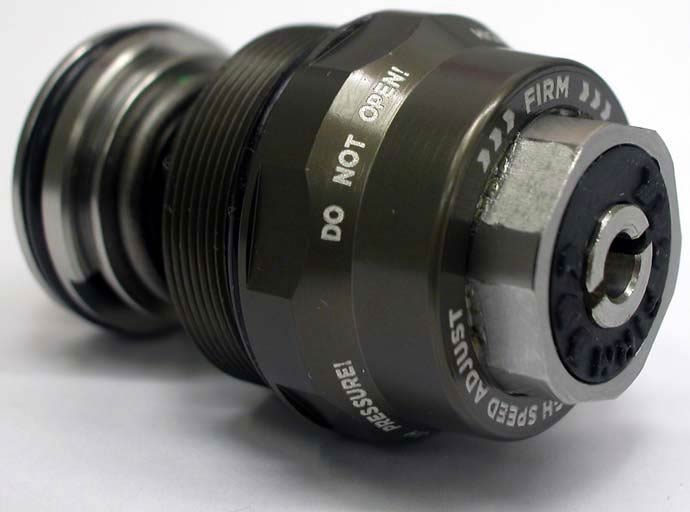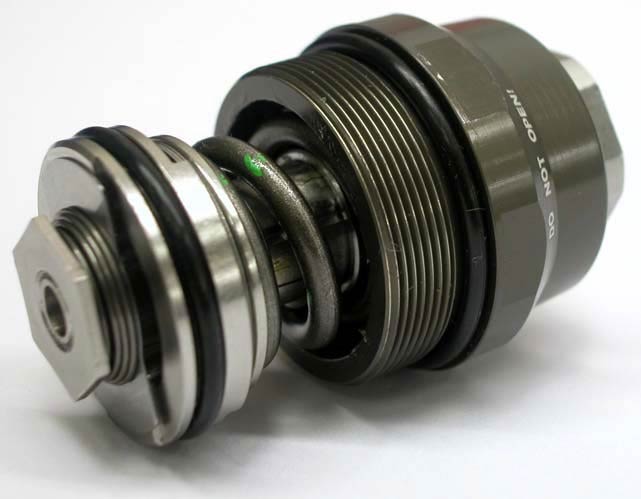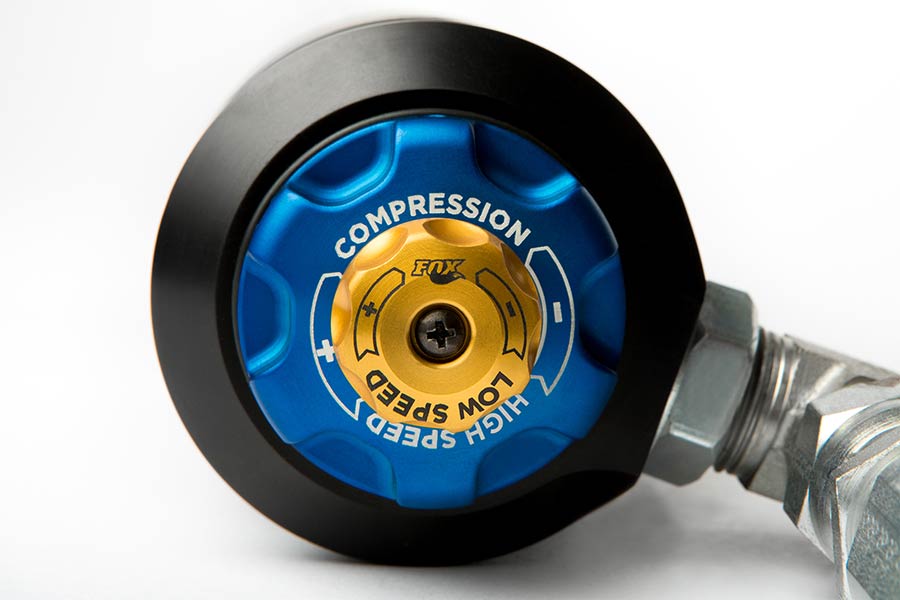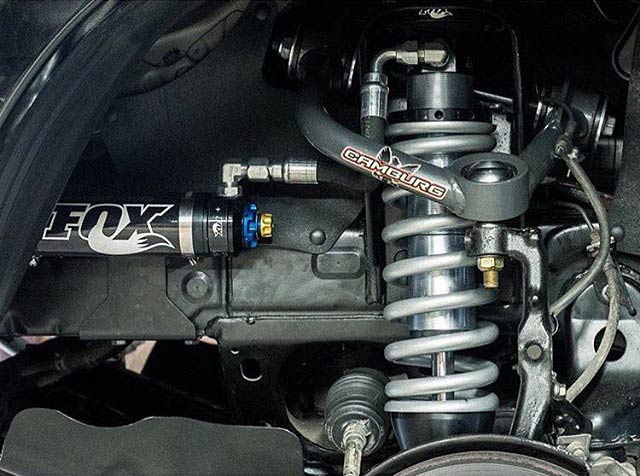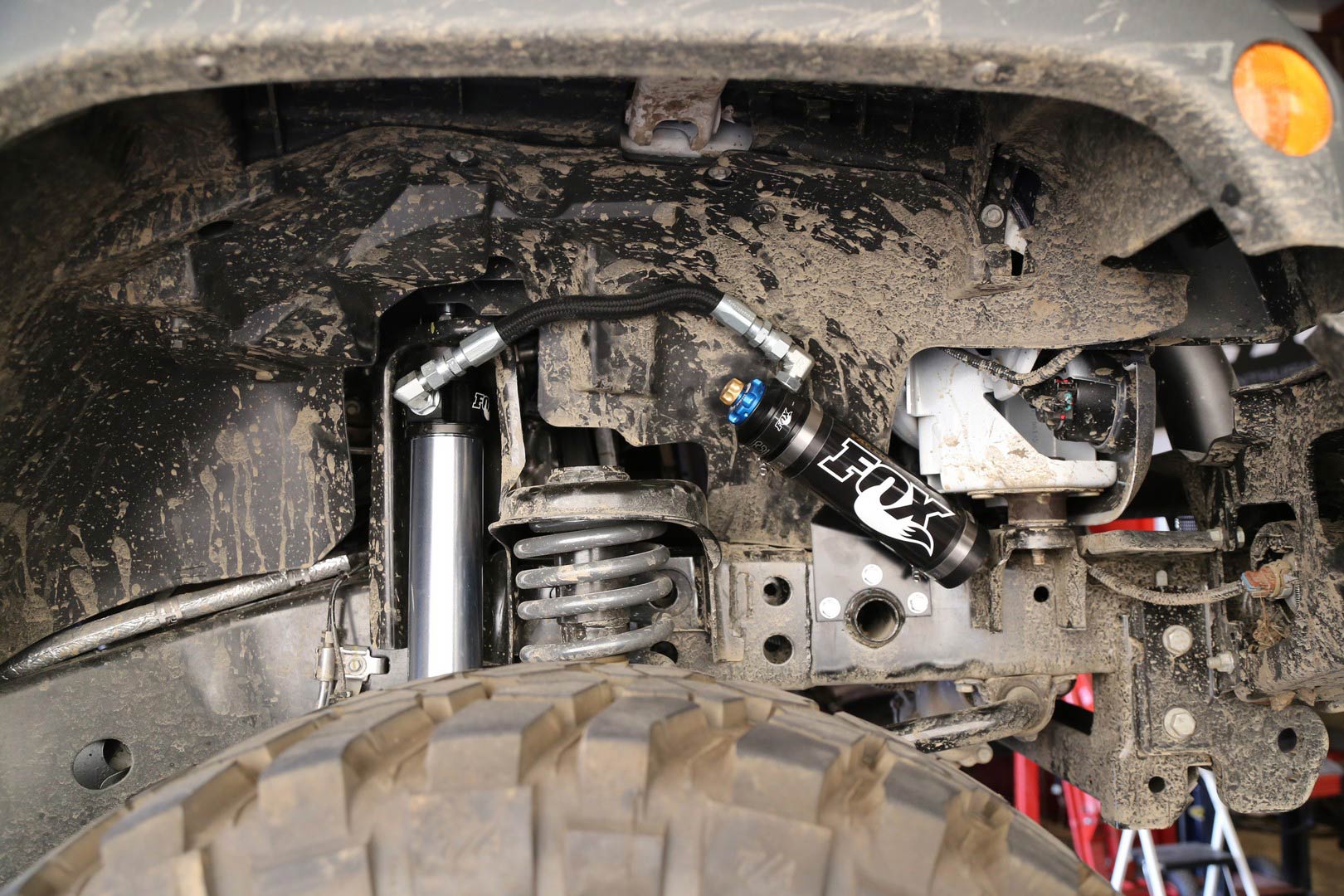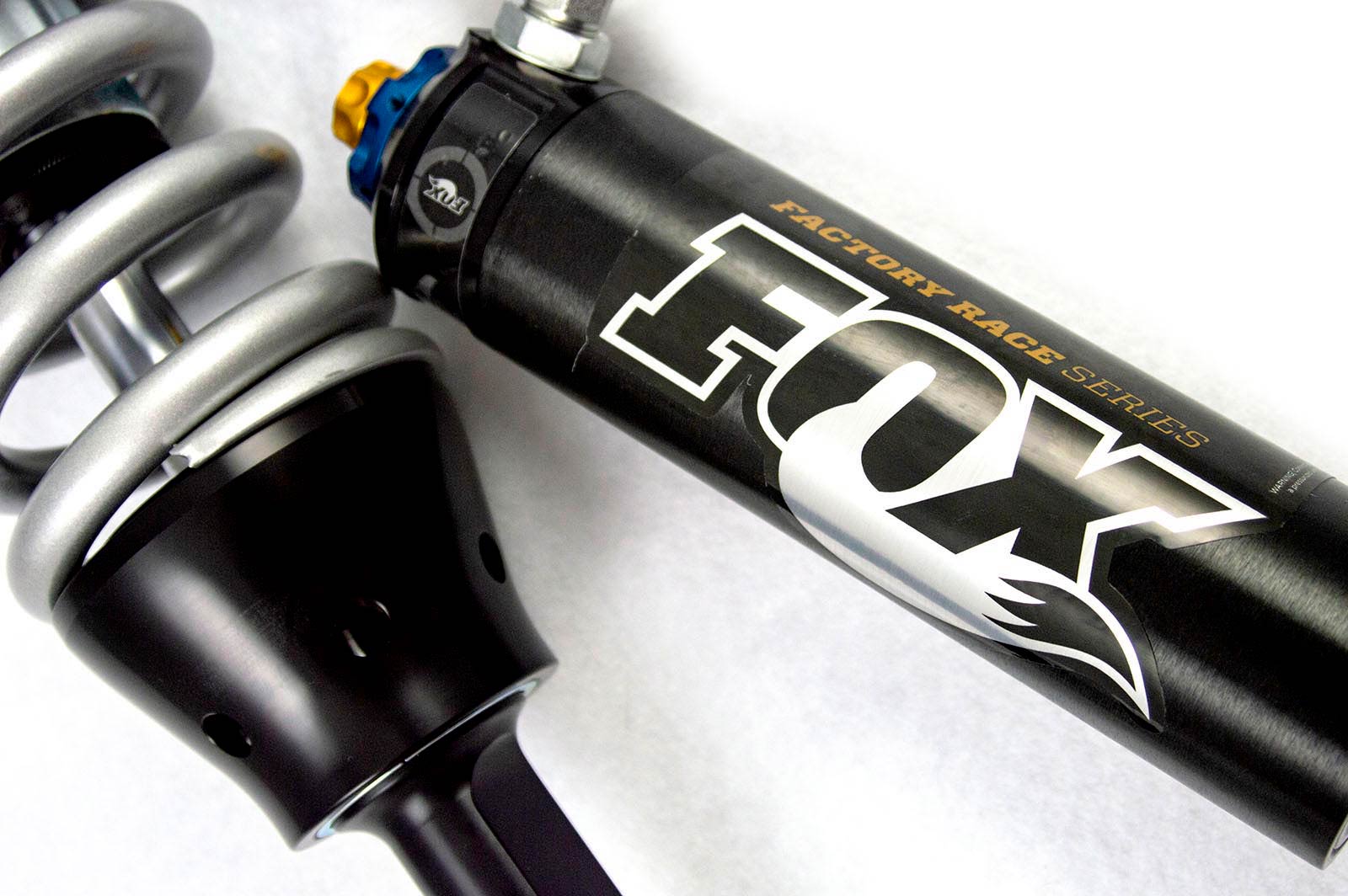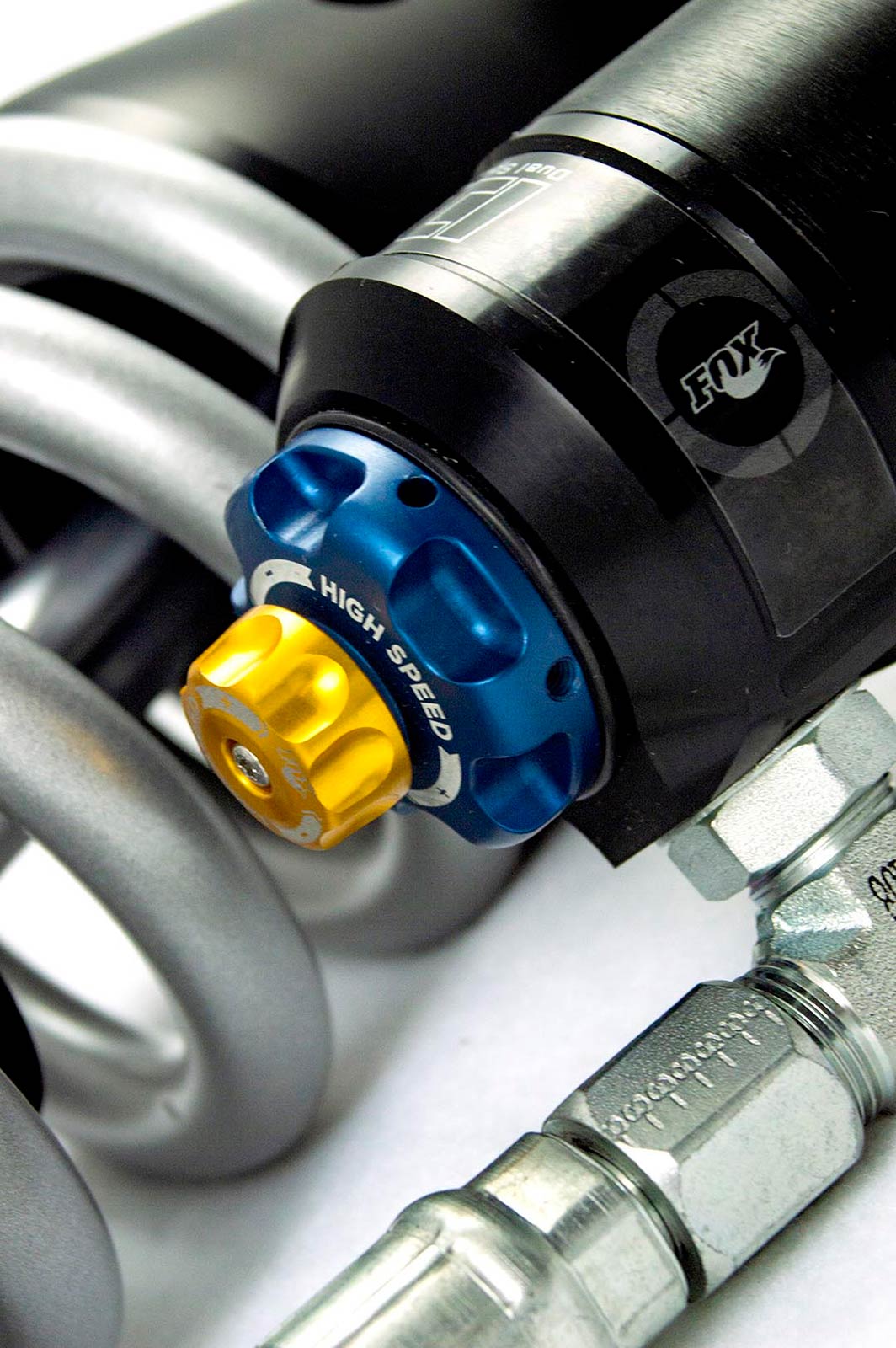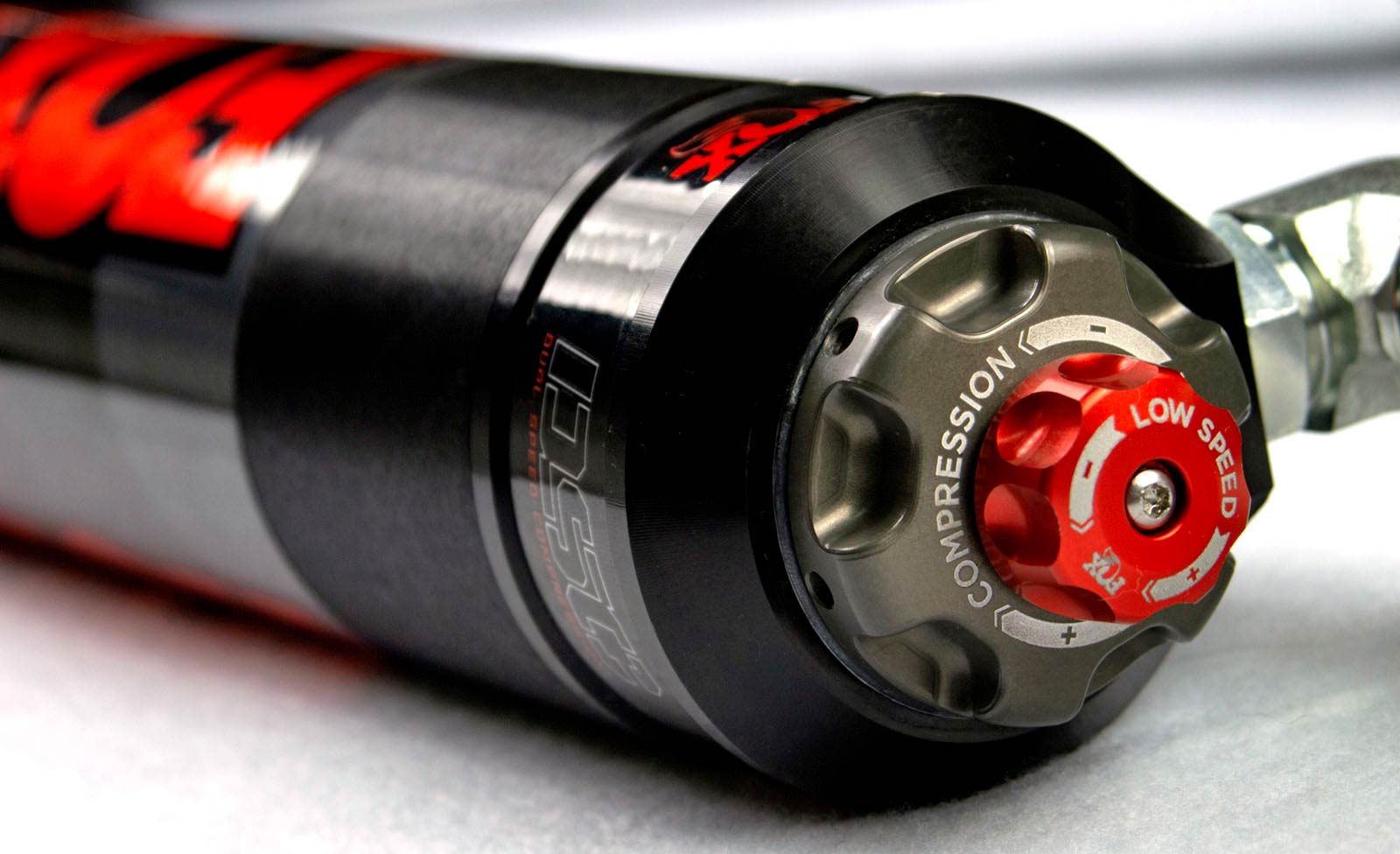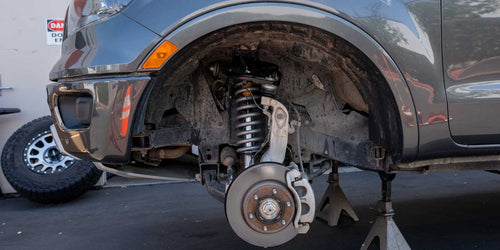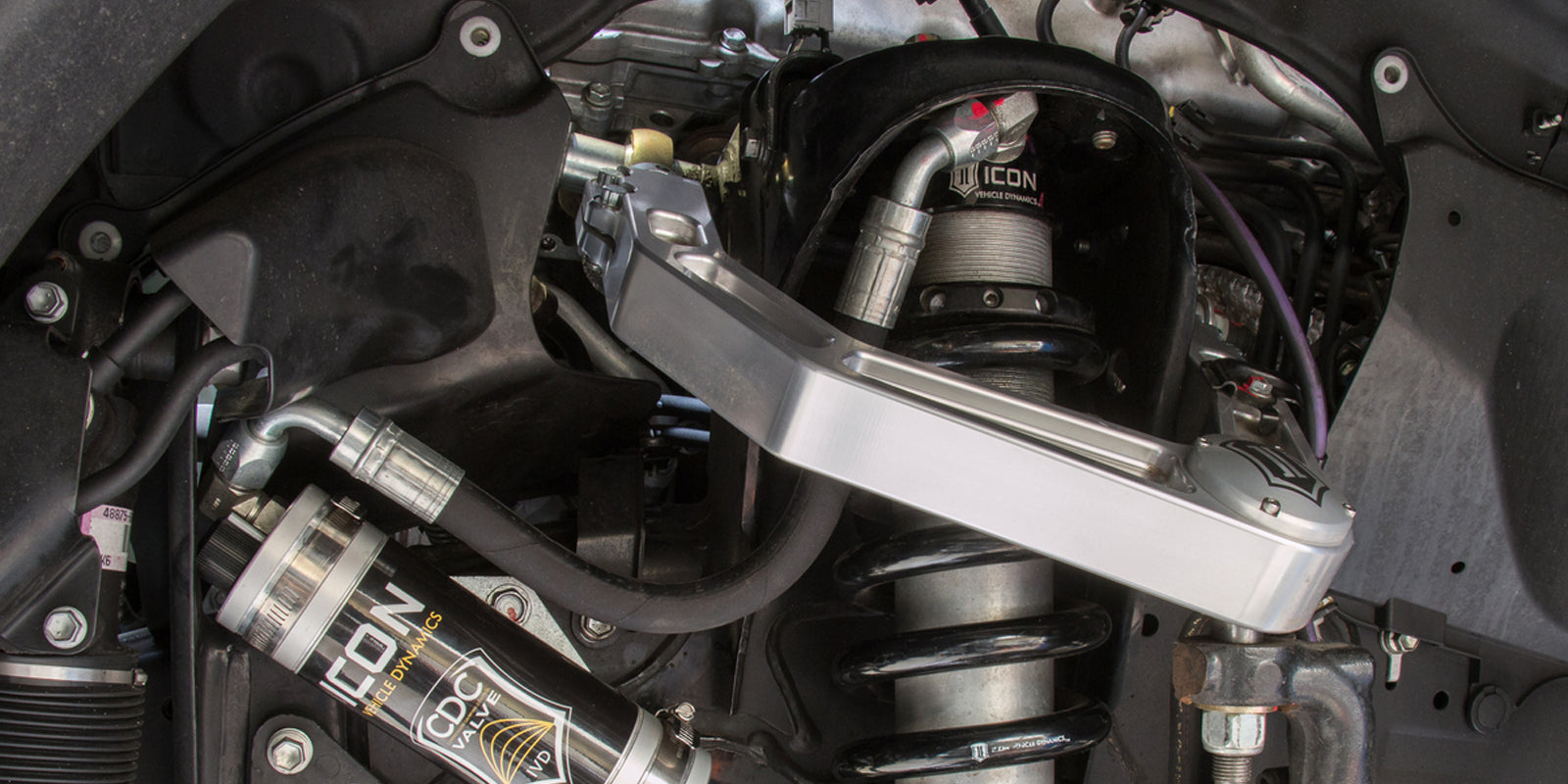Fox Dual Speed Compression (DSC) Adjustment in the Real World
What is Dual Speed Compression (DSC)?
FOX has some of the best off-the-shelf adjustable shocks available for your truck, in the form of their Dual Speed Compression adjustment setup. There are two adjustment dials, one for high speed compression adjustment, and one for low speed adjustment (similar to whats found on the 2.0 CD adjustable shocks).
From Fox:
Add remarkable versatility and precise tuning with new DSC. A simple twist of either two adjuster knobs allows 10 separate low-speed and 12 high-speed compression levels. Included new black anodized aluminum reservoir increases cooling efficiency.
What is Low Speed Compression?
The LSC (low speed compression) adjuster primarily affects the compression damping during slow suspension movements such as g-outs or smooth jump landings. It also affects wheel traction and the harshness or plushness of the vehicle (note that low-speed has nothing to do with the speed of the vehicle!). Choose a LSC setting that gives good body control (roll in corners, dive under braking, squat under acceleration, etc) without causing excessive harshness or loss of traction.
Low Speed Compression Uses
- A firm setting will provide a tighter feel to the vehicle in corners, whether on pavement, highways, canyon roads, and dirt roads with predictable terrain.
- A softer setting is optimal for the commute, long road trips, where ‘plushness’ and ride comfort is paramount for a lot of miles.
- A firm setting is good for g-out actions, such that happen during rock crawling or slow speed, but aggressive obstacles that fully extend the shock when you have full tire droop.
- A firm setting offroad helps with squat under acceleration, such as exiting turns. Too soft of a setting might result in wheel hop when gunning it, resulting in less traction, and thus less acceleration.
What is High Speed Compression?
The HSC (high speed compression) adjuster mainly affects the compression damping during medium to fast suspension movements such as steep jump faces, harsh flat landings and aggressive whoops. The goal is to run as little high-speed compression damping as possible without bottoming out.
High Speed Compression Uses
- If you’re jumping your vehicle, turn this way up, so upon landing you have the most pre-load on those deflective disc in the shock already activated, essentially priming the shock for a large action (which moves the piston the full travel length in the shock very quickly)
- A medium to firm setting on unpredictable desert or mountain terrain will allow the vehicle to travel a decent pace, without worrying about stuffing the front bumper into a whoop accidentally, or nose diving too hard coming down off a cliff face.
- Going fast over whoops, its essential to have the proper balance of high speed compression to allow for obstacle absorption, while balancing rebound of the wheel for the next obstacle.
- Depending on speed over washboard roads, the high speed compression can turn a teeth rattling ride into something more manageable and forgiving to both the vehicle and passengers.
Final Thoughts
These versatile adjustments come into play even further when considering additional vehicle loadouts and gear additions. Being able to adjust the rear shocks to help regulate the camper shell, camping gear, sport gear, motorcycles, or heavy duty work loads will make a significant difference in the way the vehicle handles.

